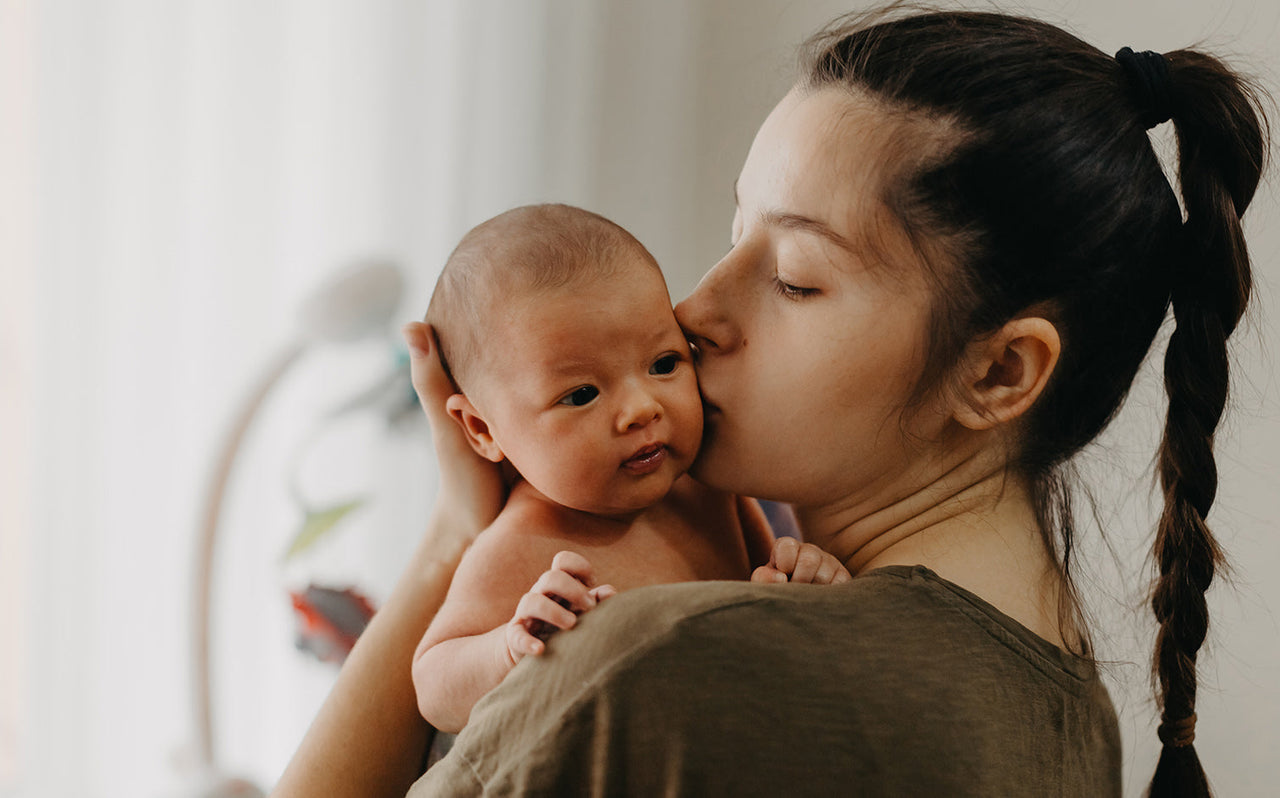While you may be blessed with thick, lustrous hair during pregnancy, postpartum symptoms can cause some people to experience hair loss. With all the stresses that come with having a baby, experiencing hair loss can knock your confidence and self-esteem. Postpartum alopecia, also known as post-pregnancy alopecia or postpartum hair loss, is a fairly common and normal condition for new mums. It’s a side effect of the hormone changes that come with pregnancy and delivery, and it usually goes away on its own within a year or so after you give birth. But what exactly is postpartum alopecia? How frequently can it happen? And what can you do to reduce your risk of developing it? Read on for our complete guide to postpartum alopecia.

Mothers and mums-to-be should take special note! If you’re planning to have kids soon, this information could help you in coming up with an action plan to prevent postpartum alopecia and other related conditions. If you’re wanting to find out more about alopecia and how to find the best wig suited for you, read our article on Tips on Finding Wigs and Styling Them.

What is Postpartum Alopecia?
Postpartum alopecia is the medical term for hair loss that occurs after pregnancy. Up to 70% of women experience some hair shedding or hair thinning during pregnancy, and 10-15% may experience significant hair loss. Postpartum alopecia is often accompanied by hair shedding or hair thinning, which is most common after the first four to five months after childbirth. It’s important to note that postpartum alopecia is different from postpartum hair loss. Postpartum hair loss refers to hair shedding and thinning a few months after you give birth. It can happen to anyone, but it’s most common in women who normally experience dramatic hair shedding. Postpartum alopecia is different because it causes hair to fall out significantly after the first two to five months after childbirth.
How Frequently Does Postpartum Alopecia Happen?
As we mentioned before, up to 70% of women experience hair shedding or hair thinning during pregnancy. The good news is that most of them will regain their normal hair growth once the hormone changes subside. Sadly, 10-15% of women will experience postpartum alopecia, which involves excessive hair shedding while the hair is in the growing phase. This can cause noticeable hair loss, so we would suggest checking in with your doctor as soon as possible to address this issue. Postpartum alopecia can also cause hair thinning, which can be a problem for women who are trying to regrow thicker hair. In fact, postpartum alopecia is the top cause of hair thinning in new mums. Postpartum alopecia is most common in Hispanic women, but it can affect women of any ethnicity. If you have a family history of hair loss, it’s important to take extra precautions to prevent postpartum alopecia.

What Causes Postpartum Alopecia?
Postpartum alopecia is caused by changes in hormone levels during pregnancy and after delivery. While you’re pregnant, your body produces more androgen, a type of hormone that affects hair growth and shedding. Pregnant women also often have higher levels of estrogen, a hormone that helps hair grow. After you give birth, your estrogen levels may lower, which can cause the hair to thin or fall out. Research suggests that postpartum alopecia is caused by a combination of hormonal changes and stress. Hormonal changes are normal after pregnancy, but some women experience more dramatic changes than others. Stress plays a role in postpartum alopecia because it can cause these hormonal changes that eventually lead to hair loss.
Signs and Symptoms of Postpartum Alopecia
Most women experience some postpartum hair shedding, but excessive shedding is a sign that postpartum alopecia is present. There are a few ways to tell if you’re experiencing postpartum hair shedding. First, you might notice more or large clumps of hair in your shower or on your comb or brush than usual. Strands or larger clumps of hair may also show on your pillow in the morning. One of the main identifiers of postpartum alopecia is to look at your hairline to see if it’s receding. If you notice a few of these things, you should see your doctor to rule out postpartum alopecia. It’s also important to monitor your hair for signs of thinning. If you’ve always had thick hair, it may become noticeably thinner after giving birth.
Tips to Treat Postpartum Alopecia
Treating alopecia or postpartum alopecia isn’t necessarily straightforward, especially with the natural hormonal changes in the body. On the bright side, there are several steps you can take to transition your hair back to its silky, voluminous state. If managed well, you could start to see normal hair growth as early as 6 to 12 months after you give birth.
- One of the key methods of treating postpartum alopecia is to maintain a healthy diet. Ensuring that you include the necessary vitamins and minerals in your meals such as the nutrients from fruits and vegetables. Protein and biotin-rich foods such as eggs, seeds, and nuts are also crucial for hair growth. You should also be considering your water-intake because hydration is key!

- The other factor that plays a key role in hair growth is stress management. By regulating your stress levels, you are essentially regulating your hormone imbalances which affect the growth of your hair. You can adopt practices into your routine such as mindfulness activities such as mediation and daily exercise.

- As well as maintaining a healthy diet full of nutrients, it’s worthwhile taking additional nutritional supplements. Cosmetic dermatologists recommend Vitamin B and C, Iron, Biotin, and Keratin supplements.
The main thing we would recommend is speaking to your doctor to assign you a proper course of action so you can have your curly luscious locks once again!
Tips to Prevent Postpartum Alopecia
While there isn’t much you can do to prevent postpartum alopecia completely, there are several things you can do to reduce the risk of developing it.
- As mentioned before, you should try to eat a healthy diet rich in vitamins and nutrients and get enough sleep. This can help reduce stress and support healthy hormone levels.
- You should also use a soft bristle brush to gently comb your hair and encourage hair growth. We would recommend using the Tangle Teezer Fine and Fragile Brush to prevent excessive pulling and breakage caused by most hairbrushes.

- When possible, you should also avoid chemical-based shampoos, which can sometimes cause more hair to fall out.
- Finally, you should try to manage your stress levels as best you can. While you can’t completely prevent postpartum alopecia, you can reduce your risk of experiencing hair loss by making healthy lifestyle choices.
Postpartum alopecia is a fairly common condition that causes hair loss in new mums. It’s caused by changes in hormone levels after pregnancy and before hair regrowth. Most women experience some hair shedding during the postpartum period, but postpartum alopecia is excessive shedding while the hair is in the growing phase. Postpartum alopecia can also cause hair thinning, which can be a problem for women who are trying to regrow thicker hair. It’s important to monitor your hair for signs of shedding and thinning. Although there are several ways of treating or reducing the risk of developing postpartum alopecia, it's always best to speak with a professional for any questions or concerns.














